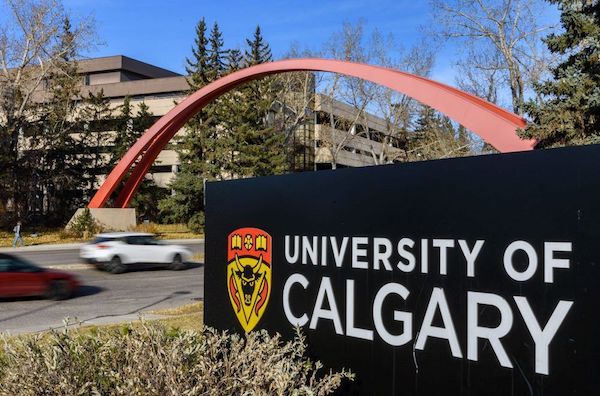Alberta
Province caps tuition increases and reduces student load interest rate to make post-secondary education more affordable

Making post-secondary education more affordable
Alberta’s government is taking action to improve affordability, address inflation and make tuition more stable and predictable for Alberta’s post-secondary students.
Alberta’s economy has recovered strongly, but students are struggling to keep up with the increased cost of living. Alberta’s government is committed to ensuring post-secondary education remains accessible and affordable for all Albertans. That’s why Advanced Education is providing post-secondary students with new, targeted affordability supports.
As part of Budget 2023, government plans to improve affordability for post-secondary students by:
- Capping domestic tuition increases at two per cent across an institution in 2024-25 and for future academic years.
- Reducing interest rates on student loans to the prime rate, which will help reduce the cost of borrowing for both current and future Alberta student loan borrowers.
- Doubling the student loan interest-free grace period from six months to 12 months to give students more time to find gainful employment without having to worry about student loan payments.
- Increasing the thresholds for the Repayment Assistance Plan to $40,000 from $25,000 so more students can benefit from the program.
In addition, Alberta’s government is providing additional funding to increase the Alberta Student Grant by $225 per month for each eligible student during the 2022-23 loan year.
“High inflation has made life more expensive for all Albertans, including post-secondary students. These new measures will help all students deal with higher costs during these challenging times.”
Alberta’s government recently provided the largest inflation relief package in Canada, with significant broad-based and targeted supports. These actions ensure post-secondary students also receive targeted affordability supports.
“These new affordability measures for students are an important addition to our Affordability Action Plan, and underscore our commitment to students and to keeping Alberta affordable.”
More than 10,000 low-income students receive this funding. The funding boost to the Alberta Student Grant means eligible students willreceive up to a total of $475 per month.
This additional per month funding will be retroactive, meaning students will receive the additional $225 per month effective the beginning of the 2022-23 academic year in the form of a lump sum payment. Students receiving this additional funding from the Alberta Student Grant will be notified by Alberta Student Aid in March. They should also receive the additional funding from student aid during this time.
“This announcement marks the implementation of longstanding requests from student leaders around affordability. On behalf of Alberta’s students, it is great to see increased efforts to ensure that post-secondary is more accessible and affordable for all.”
“Students have been struggling with the rising costs of attending post-secondary. We are happy to see student voices being heard and steps being taken to address affordability.”
Alberta’s government is committed to ensuring post-secondary education is accessible and affordable. These measures will ease the impact of inflation so post-secondary students can focus on their education and worry less about paying the bills. They will also make it easier for student loan borrowers to make their loan payments and effectively transition into the workforce.
Alberta
Low oil prices could have big consequences for Alberta’s finances

From the Fraser Institute
By Tegan Hill
Amid the tariff war, the price of West Texas Intermediate oil—a common benchmark—recently dropped below US$60 per barrel. Given every $1 drop in oil prices is an estimated $750 million hit to provincial revenues, if oil prices remain low for long, there could be big implications for Alberta’s budget.
The Smith government already projects a $5.2 billion budget deficit in 2025/26 with continued deficits over the following two years. This year’s deficit is based on oil prices averaging US$68.00 per barrel. While the budget does include a $4 billion “contingency” for unforeseen events, given the economic and fiscal impact of Trump’s tariffs, it could quickly be eaten up.
Budget deficits come with costs for Albertans, who will already pay a projected $600 each in provincial government debt interest in 2025/26. That’s money that could have gone towards health care and education, or even tax relief.
Unfortunately, this is all part of the resource revenue rollercoaster that’s are all too familiar to Albertans.
Resource revenue (including oil and gas royalties) is inherently volatile. In the last 10 years alone, it has been as high as $25.2 billion in 2022/23 and as low as $2.8 billion in 2015/16. The provincial government typically enjoys budget surpluses—and increases government spending—when oil prices and resource revenue is relatively high, but is thrown into deficits when resource revenues inevitably fall.
Fortunately, the Smith government can mitigate this volatility.
The key is limiting the level of resource revenue included in the budget to a set stable amount. Any resource revenue above that stable amount is automatically saved in a rainy-day fund to be withdrawn to maintain that stable amount in the budget during years of relatively low resource revenue. The logic is simple: save during the good times so you can weather the storm during bad times.
Indeed, if the Smith government had created a rainy-day account in 2023, for example, it could have already built up a sizeable fund to help stabilize the budget when resource revenue declines. While the Smith government has deposited some money in the Heritage Fund in recent years, it has not created a dedicated rainy-day account or introduced a similar mechanism to help stabilize provincial finances.
Limiting the amount of resource revenue in the budget, particularly during times of relatively high resource revenue, also tempers demand for higher spending, which is only fiscally sustainable with permanently high resource revenues. In other words, if the government creates a rainy-day account, spending would become more closely align with stable ongoing levels of revenue.
And it’s not too late. To end the boom-bust cycle and finally help stabilize provincial finances, the Smith government should create a rainy-day account.
Alberta
Governments in Alberta should spur homebuilding amid population explosion

From the Fraser Institute
By Tegan Hill and Austin Thompson
In 2024, construction started on 47,827 housing units—the most since 48,336 units in 2007 when population growth was less than half of what it was in 2024.
Alberta has long been viewed as an oasis in Canada’s overheated housing market—a refuge for Canadians priced out of high-cost centres such as Vancouver and Toronto. But the oasis is starting to dry up. House prices and rents in the province have spiked by about one-third since the start of the pandemic. According to a recent Maru poll, more than 70 per cent of Calgarians and Edmontonians doubt they will ever be able to afford a home in their city. Which raises the question: how much longer can this go on?
Alberta’s housing affordability problem reflects a simple reality—not enough homes have been built to accommodate the province’s growing population. The result? More Albertans competing for the same homes and rental units, pushing prices higher.
Population growth has always been volatile in Alberta, but the recent surge, fuelled by record levels of immigration, is unprecedented. Alberta has set new population growth records every year since 2022, culminating in the largest-ever increase of 186,704 new residents in 2024—nearly 70 per cent more than the largest pre-pandemic increase in 2013.
Homebuilding has increased, but not enough to keep pace with the rise in population. In 2024, construction started on 47,827 housing units—the most since 48,336 units in 2007 when population growth was less than half of what it was in 2024.
Moreover, from 1972 to 2019, Alberta added 2.1 new residents (on average) for every housing unit started compared to 3.9 new residents for every housing unit started in 2024. Put differently, today nearly twice as many new residents are potentially competing for each new home compared to historical norms.
While Alberta attracts more Canadians from other provinces than any other province, federal immigration and residency policies drive Alberta’s population growth. So while the provincial government has little control over its population growth, provincial and municipal governments can affect the pace of homebuilding.
For example, recent provincial amendments to the city charters in Calgary and Edmonton have helped standardize building codes, which should minimize cost and complexity for builders who operate across different jurisdictions. Municipal zoning reforms in Calgary, Edmonton and Red Deer have made it easier to build higher-density housing, and Lethbridge and Medicine Hat may soon follow suit. These changes should make it easier and faster to build homes, helping Alberta maintain some of the least restrictive building rules and quickest approval timelines in Canada.
There is, however, room for improvement. Policymakers at both the provincial and municipal level should streamline rules for building, reduce regulatory uncertainty and development costs, and shorten timelines for permit approvals. Calgary, for instance, imposes fees on developers to fund a wide array of public infrastructure—including roads, sewers, libraries, even buses—while Edmonton currently only imposes fees to fund the construction of new firehalls.
It’s difficult to say how long Alberta’s housing affordability woes will endure, but the situation is unlikely to improve unless homebuilding increases, spurred by government policies that facilitate more development.
-

 Opinion20 hours ago
Opinion20 hours agoCanadians Must Turn Out in Historic Numbers—Following Taiwan’s Example to Defeat PRC Election Interference
-

 2025 Federal Election6 hours ago
2025 Federal Election6 hours agoNine Dead After SUV Plows Into Vancouver Festival Crowd, Raising Election-Eve Concerns Over Public Safety
-

 International1 day ago
International1 day agoHistory in the making? Trump, Zelensky hold meeting about Ukraine war in Vatican ahead of Francis’ funeral
-

 armed forces2 days ago
armed forces2 days agoYet another struggling soldier says Veteran Affairs Canada offered him euthanasia
-

 2025 Federal Election3 hours ago
2025 Federal Election3 hours agoMark Carney: Our Number-One Alberta Separatist
-

 International7 hours ago
International7 hours agoJeffrey Epstein accuser Virginia Giuffre reportedly dies by suicide
-

 C2C Journal23 hours ago
C2C Journal23 hours ago“Freedom of Expression Should Win Every Time”: In Conversation with Freedom Convoy Trial Lawyer Lawrence Greenspon
-

 2025 Federal Election1 day ago
2025 Federal Election1 day agoCarney’s budget is worse than Trudeau’s





